Under the wave of intelligence, multi-functional integration has improved the driving experience of cars, but many issues such as manufacturing costs and computing power applications also need to be solved. Therefore, the driving and parking functions are completed based on the same control unit. Integrated domain control came into being and quickly gained favor from the market.
As one of the few domain control products in the industry that has achieved mass production, Zhixing Technology's iDC Mid domain control uses the TDA4VM chip, with 5V4R sensor configuration, and is developed in accordance with ISO26262ASILB. It can not only realize NOA navigation assisted driving and L2 driving functions, but also Equipped with 360-degree panoramic view and HPA memory parking function.
On November 15, 2022, the 2022 Second Smart Car Domain Controller was hosted by Gasgoo, guided by the Shanghai Hongqiao International Central Business District Management Committee and the Shanghai Minhang District People's Government, and co-organized by Shanghai South Hongqiao Investment and Development (Group) Co., Ltd. At the Innovation Summit, Zhixing Technology Product Director Si Zhengmin introduced that Zhixing Technology’s high-end travel and parking integrated domain control solution iDCHigh has also been invested in research and development. As an upgraded version of iDCMid, iDCHigh’s computing power is planned to reach 100+TOPS, which can realize autonomous driving functions. Full scene coverage.
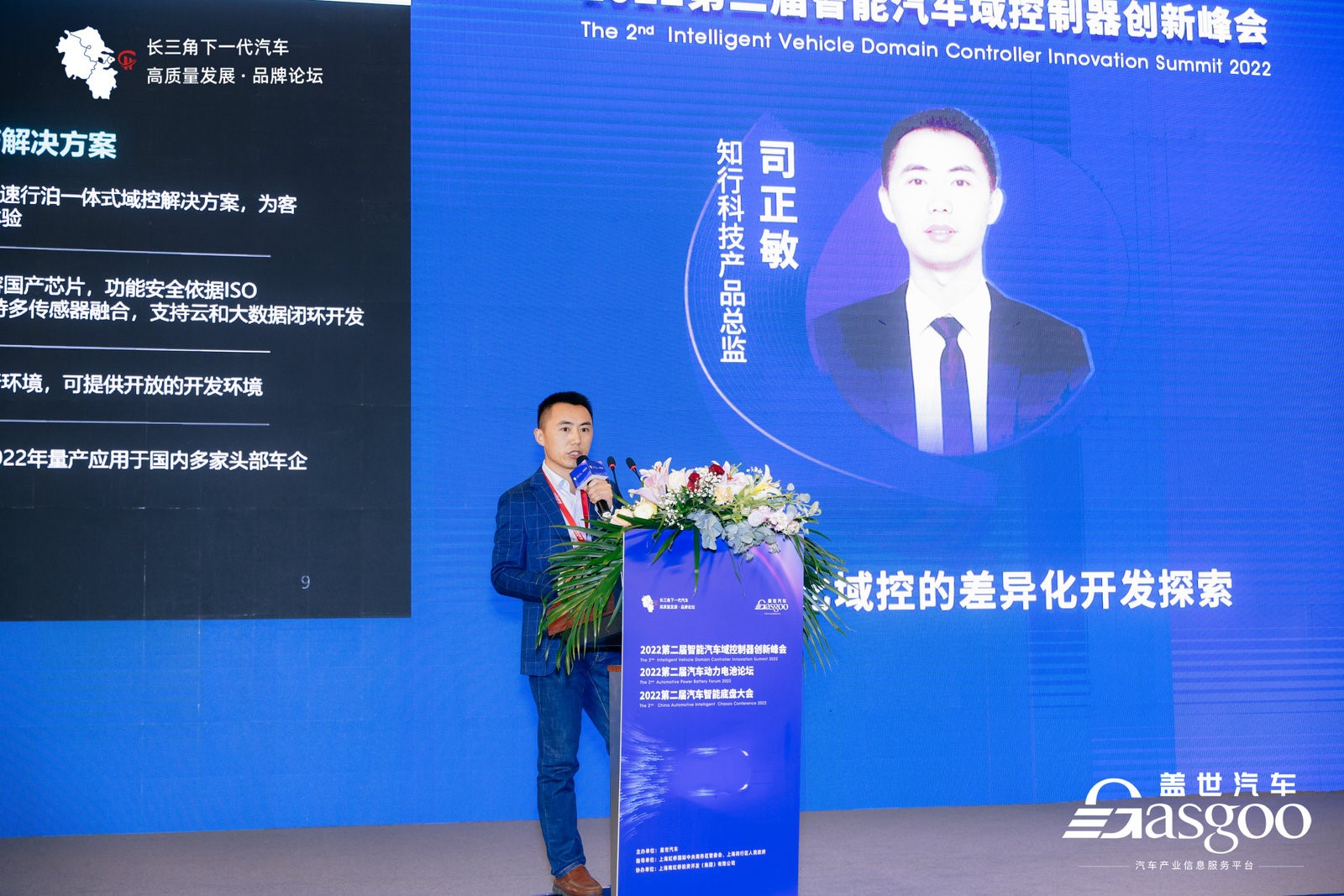
Si Zhengmin | Product Director of Zhixing Technology
The following is the summary of the speech:
Zhixing Technology Core Product Solutions
Zhixing Technology was established in 2016. We have always adhered to the development philosophy of quality first and service first, and strived for the vision of "let everyone have smart travel". We focus on autonomous driving pre-installation solutions and are committed to becoming the most trusted intelligent driving partner for automobile manufacturers. While focusing on autonomous driving product solutions, we have also launched a variety of cost-effective solutions, and have reached mass production and project development cooperation with a number of well-known OEMs. Our products have nearly 30 designated models.
Along with the rapid development of the new four modernizations of automobiles, Zhixing Technology adheres to the people-oriented product concept, adheres to user experience thinking, focuses on category innovation for product differentiation, and pays attention to the long-term relationship between products and users.
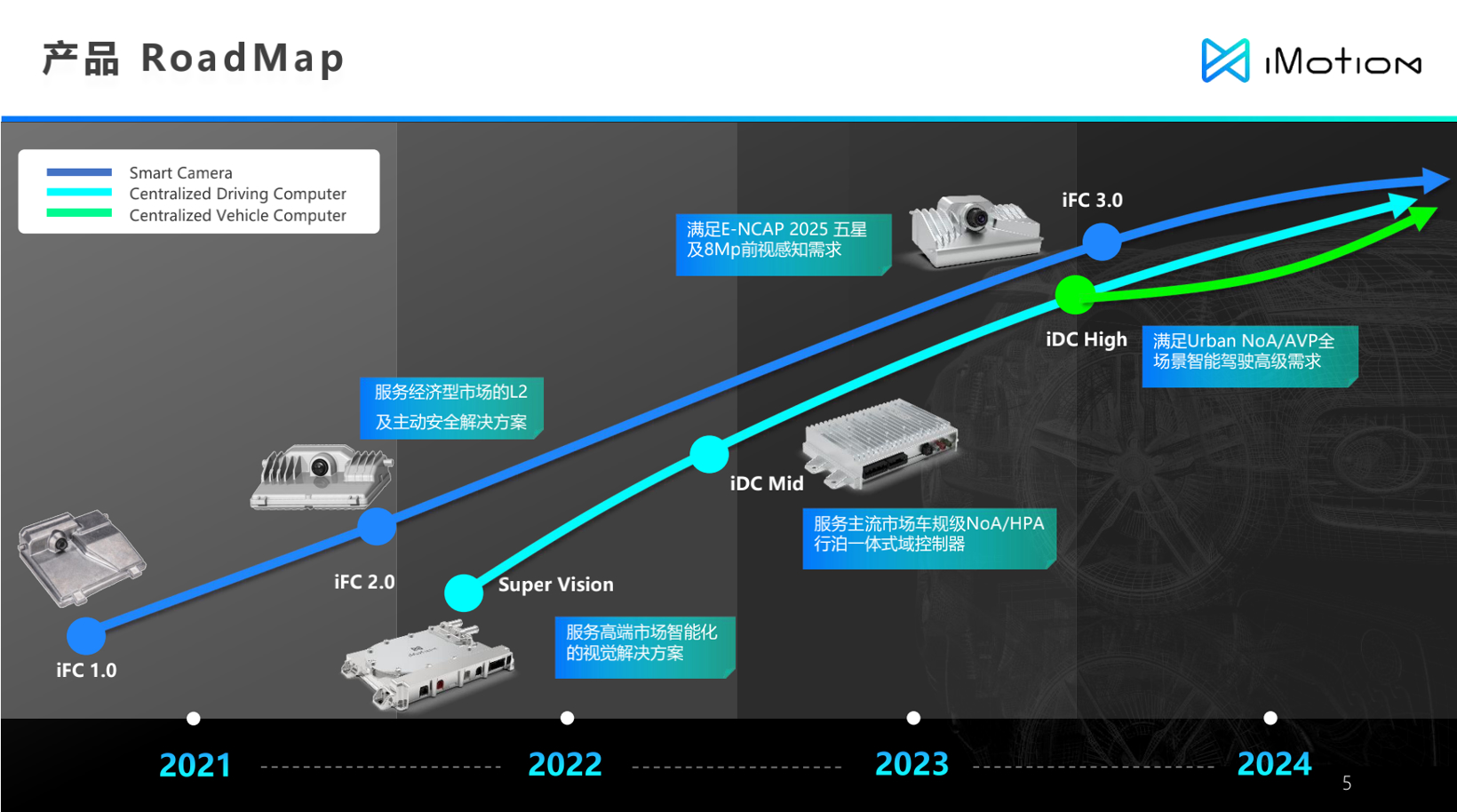
Image source: Zhixing Technology
In order to meet the rapid development needs of the market, Zhixing Technology's product lines are also constantly iterating. And as the automotive electronic and electrical architecture evolves from functional integration to highly integrated regional control architecture, we plan to realize full-scenario intelligent driving based on the iDC platform in 2024.
iFC2.0 is a front-view smart camera that has been installed in batches on many customer models. It mainly meets the current L2 market demand. The architectural design supports MCU adaptation to TC234 and RH850, and supports access to multi-channel millimeter wave radars, which is flexible Meet the different needs of customers.
In order to achieve coverage under urban working conditions, iFC3.0 was born for this purpose, using an 8-megapixel high-definition wide-angle module, which has strong capabilities in target perception and recognition.
With the rapid growth of client demand for intelligent configuration, L2+ has become a popular configuration in mid-to-high-end models. The cost-effective domain controller with integrated parking and parking is also in a state of bringing its own traffic. Zhixing Technology iDC Mid will complete mass production for many customers. deliver.
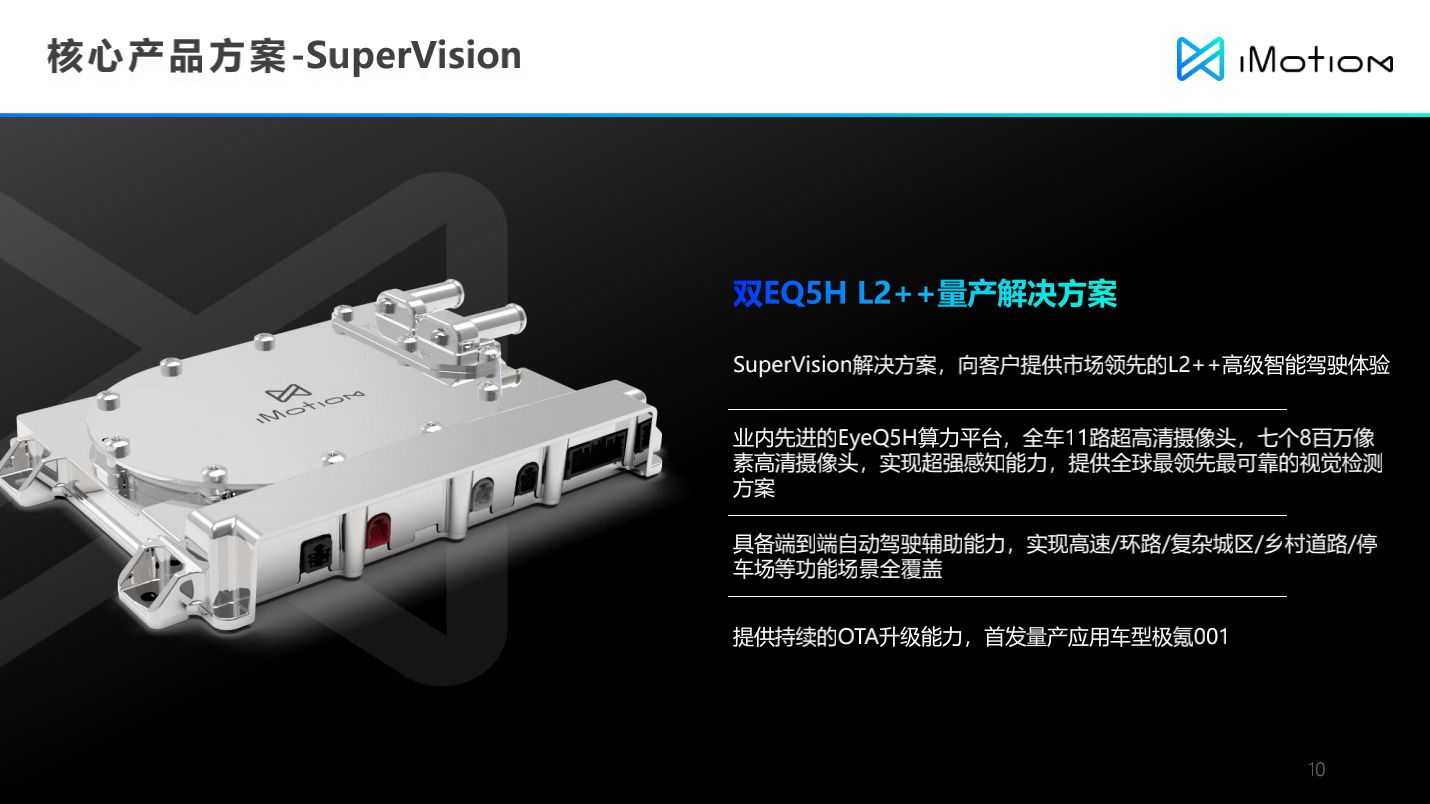
Image source: Zhixing Technology
At the same time, in response to the differentiated needs of the market, we have made different levels of differentiated designs in product design and positioning. For example, for core customers, we provide customized development. SuperVision is a product based on dual EQ5H.
Based on the previous flagship products, we can see that Zhixing Technology is expanding step by step towards full-scenario autonomous driving. On the iDC platform, we plan to launch the iDC High platform in 2024 to complete the expansion and application of all scenarios, using a visual solution with strong vision and emphasis on perception. We will continue to uphold the cost-effective attributes of the iDC platform in terms of system architecture and software design. . This product will be delivered in 2024 to implement the functions of UrbanNOA and AVP.
Following the development of industrialization trends, Zhixing Technology will continue to explore independent and controllable development routes.
iDC platform core capabilities

Image source: Zhixing Technology
The lower right corner is NOA's navigation-assisted driving function under construction road conditions. The main scenarios covered by this NOA function include automatic lane changes, automatic up and down ramps, and construction area passage.
The upper left corner is the HPA memory parking function that is currently in the process of mass production and delivery. We are also polishing more details based on user thinking, including cornering comfort, obstacle avoidance and bypassing during valet parking, safety and efficiency, human-computer interaction, etc.
The upper right corner and the lower left corner are the status of our APA automatic parking function in large-angle diagonal parking spaces and horizontal parking spaces. The automatic parking system perception algorithm not only uses the fusion of ultrasonic waves and surround view, but also uses the perception of Freespace parking areas. Algorithm, we can see in the video that it recognizes and processes the back-end parking space lines during the parking process, which can improve parking efficiency and functional flexibility, and will also be of great help in many complex scenes.
The above is our overall iDC platform development status, so what supports our rapid product development? Zhixing Technology already has full-stack self-research capabilities, focusing on people-oriented, product-user relationship, differentiation, user experience and other elements in its product concept.
Full-stack self-developed algorithm capabilities empower iDC development
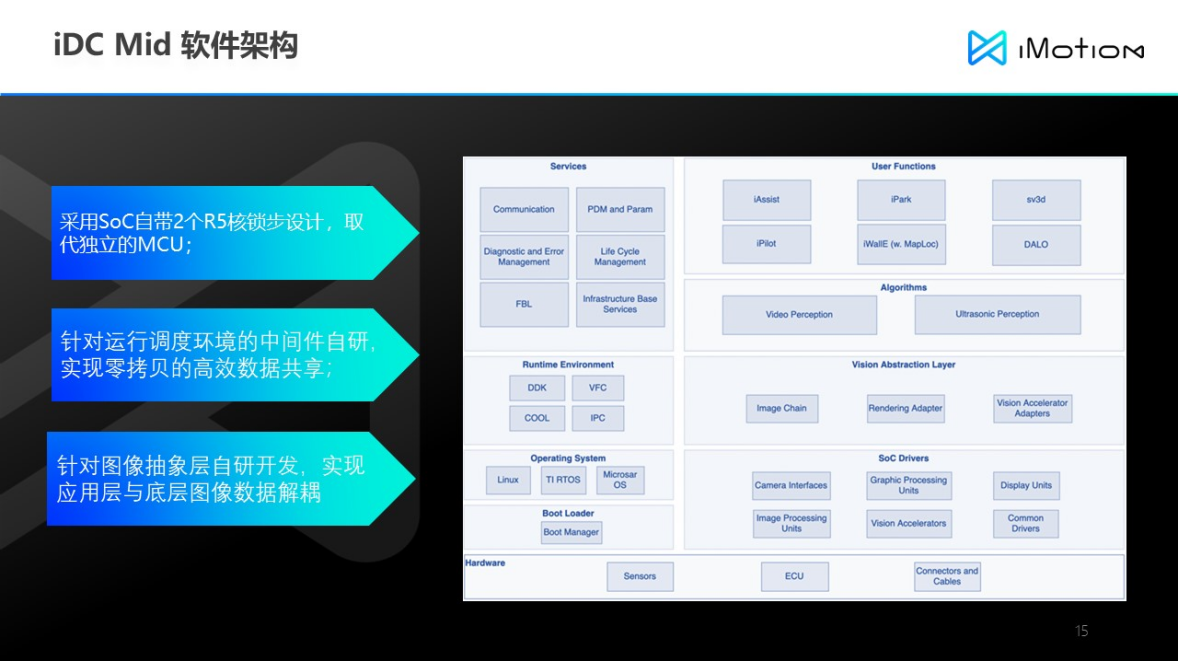
Image source: Zhixing Technology
The development and deployment of algorithms also requires efficient architectural design support. We mainly introduce two major features (operating system and middleware).
The first is the operating system. IDC currently uses three operating systems. MainDomain has Linux and RTOS. Linux is mainly used for the development of application functions and algorithms. RTOS mainly uses TI IP for the development of USS Driver, Video Driver, etc. Microsar OS It is mainly developed based on the classic autosar method for communication, diagnosis, and system functional safety. It uses the SoC's own two R5 core lock-step design to replace an independent MCU.
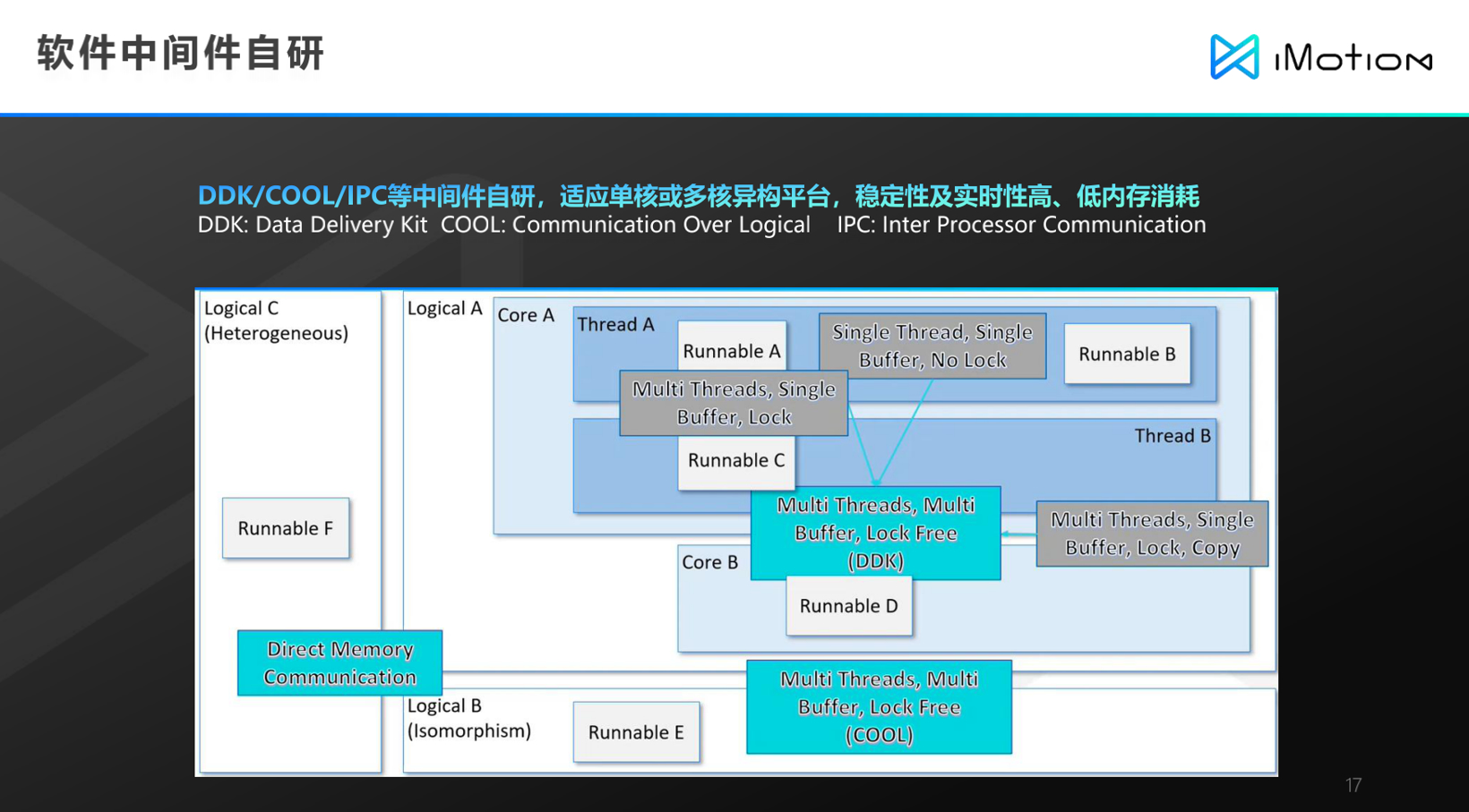
Image source: Zhixing Technology
In order to improve the development efficiency of middle layer and application layer links, in the iDC platform, we mainly conduct self-research on middleware from two modules: running environment and visual abstraction layer. For the operating environment, we have developed middleware such as DDK, COOL, and VFC.
DDK is mainly responsible for communication between modules, not only communication between homogeneous modules, but also communication between heterogeneous cores. VFC mainly standardizes the encapsulation of data types and can realize data types that do not rely on third parties. COOL is mainly responsible for communication between different operating systems to achieve efficient data sharing with zero copy, which is very important for us to increase bandwidth and optimize bandwidth design.
The purpose of self-research and development of the image layer is mainly to achieve decoupling between the application layer and the underlying image data, improve the efficiency of function transplantation and adaptation when adapting to different SoCs, so that algorithms such as visual perception and planning are not strongly associated with the hardware, so as to enable This greatly improves the efficiency of adapting to new platforms. Currently, the iDC platform software code is close to 5 million lines.
In terms of vision algorithm development, we have currently completed the construction of a lightweight AI model on the iDC platform, which supports multi-scenario and multi-target recognition capabilities. It not only supports target 3D obstacle output and general obstacle detection, but also supports lane lines and parking spaces. line detection, and Freespace assisted parking detection.
Faced with the diverse requirements for multi-link image preprocessing, without an experienced engineering development team capable of in-depth deployment of SoC and optimization of links, it will bring huge challenges to the development of the platform. During the development process, we deeply mined hardware resources and carried out secondary optimization and development of the chip's core through self-developed algorithms. After in-depth secondary development, we have achieved a high frame rate at a high frequency output rate, and the load is relatively low. This is a basic link in the development process, and it is also a very important link.
During the development process, we also solved problems in many scenarios through innovation. During the development process, memory parking is a relatively challenging issue, and generally mid- to high-end models have corresponding configuration requirements. How to carry out cost-effective development while also lightweighting the system solution? How to achieve high-precision positioning without high-precision IMU? How to identify band changes in the scene? These are all problems we encounter in real development.
Previous article:Leading by half a body in 2022, Hao Mo Zhixing takes the lead in mass-producing autonomous driving
Next article:What is ESSA architecture and what is SOA architecture? How is this technology platform different from before?
- Popular Resources
- Popular amplifiers
- Car key in the left hand, liveness detection radar in the right hand, UWB is imperative for cars!
- After a decade of rapid development, domestic CIS has entered the market
- Aegis Dagger Battery + Thor EM-i Super Hybrid, Geely New Energy has thrown out two "king bombs"
- A brief discussion on functional safety - fault, error, and failure
- In the smart car 2.0 cycle, these core industry chains are facing major opportunities!
- The United States and Japan are developing new batteries. CATL faces challenges? How should China's new energy battery industry respond?
- Murata launches high-precision 6-axis inertial sensor for automobiles
- Ford patents pre-charge alarm to help save costs and respond to emergencies
- New real-time microcontroller system from Texas Instruments enables smarter processing in automotive and industrial applications
- Innolux's intelligent steer-by-wire solution makes cars smarter and safer
- 8051 MCU - Parity Check
- How to efficiently balance the sensitivity of tactile sensing interfaces
- What should I do if the servo motor shakes? What causes the servo motor to shake quickly?
- 【Brushless Motor】Analysis of three-phase BLDC motor and sharing of two popular development boards
- Midea Industrial Technology's subsidiaries Clou Electronics and Hekang New Energy jointly appeared at the Munich Battery Energy Storage Exhibition and Solar Energy Exhibition
- Guoxin Sichen | Application of ferroelectric memory PB85RS2MC in power battery management, with a capacity of 2M
- Analysis of common faults of frequency converter
- In a head-on competition with Qualcomm, what kind of cockpit products has Intel come up with?
- Dalian Rongke's all-vanadium liquid flow battery energy storage equipment industrialization project has entered the sprint stage before production
- Allegro MicroSystems Introduces Advanced Magnetic and Inductive Position Sensing Solutions at Electronica 2024
- Car key in the left hand, liveness detection radar in the right hand, UWB is imperative for cars!
- After a decade of rapid development, domestic CIS has entered the market
- Aegis Dagger Battery + Thor EM-i Super Hybrid, Geely New Energy has thrown out two "king bombs"
- A brief discussion on functional safety - fault, error, and failure
- In the smart car 2.0 cycle, these core industry chains are facing major opportunities!
- The United States and Japan are developing new batteries. CATL faces challenges? How should China's new energy battery industry respond?
- Murata launches high-precision 6-axis inertial sensor for automobiles
- Ford patents pre-charge alarm to help save costs and respond to emergencies
- New real-time microcontroller system from Texas Instruments enables smarter processing in automotive and industrial applications
- Commonly used PCB software on the market and corresponding common file suffixes
- Which NB-IOT module is better?
- Ready to use, STM32G474 project of HST221 temperature and humidity sensor
- [SGP40 Review] 1. Unboxing Review
- Do you use fast charging? How long does it take for you to fully charge your phone?
- Comparison of CC2540 and nRF51822 application development
- The main purpose of immersion gold circuit board and the difference from other processes
- TAxIV interrupts for msp430
- Please recommend: Python classic textbook!
- EEWORLD University Hall----Live Replay: 100G/400G Optical Communication Test Solutions



 TDA7376B
TDA7376B











 京公网安备 11010802033920号
京公网安备 11010802033920号